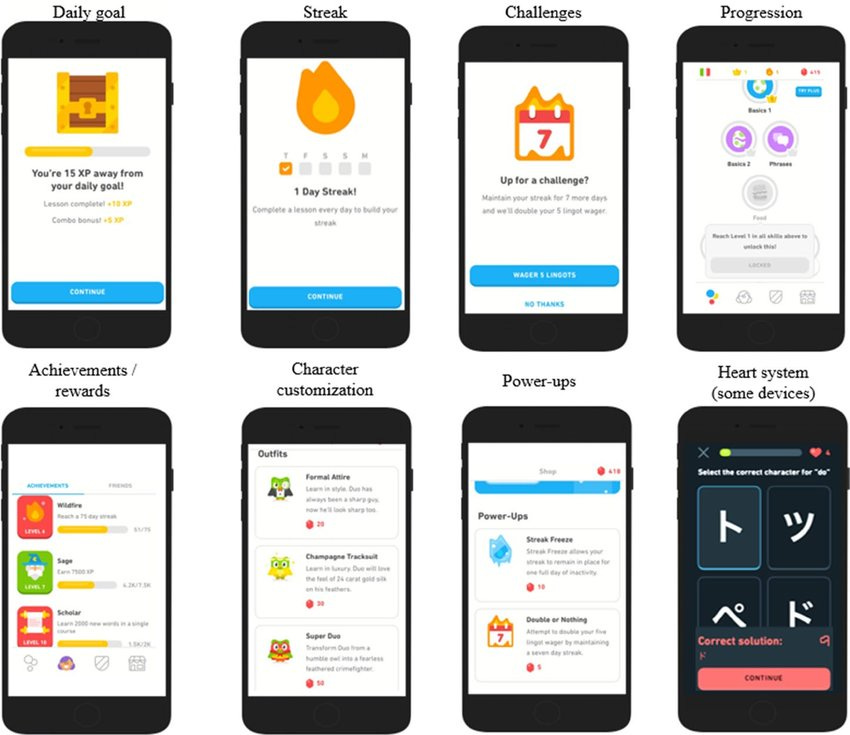🌍Takeoff #54: Bringing the world closer
Welcome to Takeoff, your weekly dose of product deep dives and new learning opportunities. Today, we're diving into the Duolingo story. Lessgo!
🐦 Contributors to Duolingo’s Success
Did you know that Duolingo, the world-renowned language-learning app, started as a platform for crowdsourced translation? Its creator, Luis von Ahn, initially used Spanish speakers to translate Wikipedia articles into English while learning the language. However, the model wasn't engaging enough, prompting a pivot to a gamified app with personalised lessons. Today, with over 500 million users and courses in 100+ languages, Duolingo's unique business model and engaging mascot, Duo the Owl, have made it a global language-learning sensation. In this newsletter, we'll explore Duolingo's remarkable journey, its innovative strategies, and the lessons it offers for aspiring product managers.
Experimentation: The Key to Growth
Duolingo's growth journey is a testament to the power of experimentation. Gina Gotthilf, former VP of Growth at Duolingo, emphasised the importance of trying new things and not being afraid to fail. The team at Duolingo constantly tests new features, from gamification elements to different monetisation strategies. One of the successful experiments was allowing users to use Duolingo a little bit without signing up. This led to a much better conversion rate. They tested different variations, such as asking users to sign up at different times and allowing them to dismiss the message. This willingness to experiment has allowed Duolingo to continuously improve its product and user experience, leading to increased user engagement and retention.
Gamification: Making Learning Fun
Duolingo's success in language learning is largely due to its innovative use of gamification elements. Users earn points for completing lessons and milestones, contributing to their overall level; creating a sense of achievement and progress. Duolingo also tracks users' daily streaks and allows them to set daily goals, with additional points and rewards for achieving these goals and maintaining streaks. Leaderboards and competitions add excitement to the learning process, as users can compete with friends and other learners, join leagues, earn points, and climb the ranks. Interactive challenges, such as listening exercises, translation tasks, and vocabulary quizzes, make the learning process feel like a game. Users can also customise their avatars and earn virtual rewards by achieving milestones and completing challenges, adding a personal touch and sense of ownership.
External Inspiration and Data-Informed Understanding
In an effort to drive up retention, the Duolingo team sought inspiration from other types of products, such as casual gaming and Uber. This external inspiration helped the team come up with new hypotheses and ideas for product improvement. Additionally, the VP of Product at Duolingo worked with engineering and data science to build a data-informed model of user behavior. This model allowed the team to answer questions like, "If we improved at-risk users by 1%, what will the impact be on DAU and MAU?" This level of insight made prioritisation much easier and allowed the team to determine exactly which lever to pull to maximise ROI.
Closing Thoughts
Duolingo's journey offers a wealth of insights for product managers and growth enthusiasts. Its success is a testament to the power of experimentation, user-centricity, gamification, focus, and data-informed understanding. As Duolingo continues to evolve, its user-centric approach remains the cornerstone of its strategy. Recently, Duolingo has made a significant move into AI, introducing Duolingo Max, powered by GPT-4. Developed in collaboration with OpenAI, this AI-driven feature enhances the learning experience and underscores Duolingo's commitment to innovation and providing high-quality education for all. This recent AI initiative is a clear indication of Duolingo's ongoing efforts to leverage advanced technology in its mission to make top-tier education accessible to everyone.
Bonus Access Duolingo’s Product Spec Template - https://notion.notion.site/Duolingo-s-product-spec-91113938037949699cb409b155904294
🚀 Semiconductor Engineer to PM?
Navneet, Co-founder of Airtribe, sat down with Akshay Krishnamoorthy, Applications Engineer at National Instruments and alumnus of our Product Management Launchpad, to discuss his journey to soon, becoming a product manager. Akshay spoke about how his semiconductor engineering experience will make him a great PM, his Airtribe experience, and a lot more! Watch here!
💁♂️ Product Jargon of the Week
Guardrail Metrics
In product management, guardrail metrics are key indicators that help teams avoid undesirable outcomes while pursuing their goals. They act as safety measures to ensure that product strategies don't have unintended negative effects. For example, while trying to increase user engagement, a product team might use customer satisfaction as a guardrail metric to ensure they don't compromise user experience. Essentially, guardrail metrics help product teams balance their objectives and prevent harmful consequences.
⌛Product Management Launchpad starts in 3 days!
If you would like to learn from product leaders at Paytm, Shopify, and Razorpay, this is your chance! You will also enjoy peer-to-peer learning, solid interview prep, interesting case studies, and a super fun community meetup. 🫂
This is your last chance to apply! Applications are closing soon. Apply here!
That’s all for today, folks! We hope you enjoyed this week’s newsletter. 🤗
Until next week, keep learning and growing! 👋







